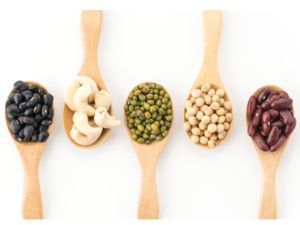Thailand and India boast some of the most dynamic and flavorful cuisines in the world. Both countries use a variety of spices that define their dishes, creating unique taste experiences. Let’s dive into the common spices found in each cuisine and see how they compare.
Common Thai Spices
- Lemongrass: This citrusy, fragrant herb is a staple in Thai cuisine, imparting a fresh, lemony flavor to soups, curries, and stir-fries.
- Tom Yum Goong: A famous Thai hot and sour soup that features lemongrass, giving it a bright, citrusy flavor.
- Tom Kha Gai: A creamy coconut milk soup with lemongrass and galangal, known for its fragrant and tangy taste.
- Galangal: Often confused with ginger, galangal has a sharper, piney flavor and is used in soups and curries to add depth and complexity.
- Tom Kha Gai: This soup, made with chicken and coconut milk, is distinguished by its use of galangal, which imparts a unique, spicy warmth.
- Khao Soi: A Northern Thai curry noodle soup that includes galangal, adding depth to the rich, creamy broth.
- Kaffir Lime Leaves: These leaves offer a distinct citrus aroma that enhances many Thai dishes, including curries and soups.
- Green Curry: A spicy and aromatic curry that uses kaffir lime leaves to enhance its citrusy flavor.
- Thai Beef Salad: Features kaffir lime leaves for a fresh, zesty kick in the salad dressing.
- Thai Basil: With its sweet and slightly peppery flavor, Thai basil is used in stir-fries and curries, providing a unique taste that sets Thai dishes apart.
- Pad Krapow: A popular stir-fry dish with meats/tofu/mushroom, Thai basil, and chili, known for its spicy and aromatic qualities.
- Pad See Ew: Stir-fried flat noodles with Thai basil, providing a fragrant and slightly sweet flavor.
- Chili: Known for its intense heat, this small chili is a key ingredient in many Thai dishes, delivering a significant spicy kick.
- Som Tum: A spicy green papaya salad that uses chili for its fiery heat.
- Nam Prik Pao: A chili paste used as a condiment, featuring chili for intense spiciness.
Common Indian Spices
- Turmeric: This bright yellow spice is essential in Indian cooking, known for its earthy and slightly bitter flavor. It’s a key ingredient in many curries and is valued for its health benefits.
- Chicken Curry: A staple dish in Indian cuisine, turmeric gives the curry its characteristic yellow color and earthy flavor.
- Dal Tadka: Lentil soup spiced with turmeric, adding both color and flavor to the dish.
- Cumin: With its warm, earthy flavor, cumin is used both whole and ground in Indian dishes, providing a distinctive taste that complements other spices.
- Chana Masala: A spicy chickpea curry that uses cumin seeds for a warm, earthy flavor.
- Jeera Rice: Fragrant rice cooked with cumin seeds, often served as a side dish.
- Coriander: Often paired with cumin, coriander offers a citrusy and slightly nutty flavor, making it a common component in spice blends and curries.
- Aloo Gobi: A dry curry made with potatoes and cauliflower, flavored with coriander and cumin.
- Coriander Chicken: A dish where coriander seeds are used to season the chicken, giving it a fresh, citrusy taste.
- Cardamom: Known for its sweet and aromatic profile, cardamom is used in both savory dishes and desserts, adding a fragrant and complex flavor.
- Biryani: A spiced rice dish that often includes cardamom pods, adding a sweet and aromatic flavor.
- Chai: Indian spiced tea that includes cardamom among its blend of spices, providing a warm, fragrant aroma.
- Garam Masala: This spice blend varies by region and family recipe but typically includes a mix of warm spices like cloves, cinnamon, and cardamom, used to add depth and richness to curries and stews.
- Butter Chicken: A creamy, tomato-based curry that uses garam masala to enhance its rich, spiced flavor.
- Paneer Tikka: Marinated cheese cubes cooked in a tandoor, with garam masala adding depth to the flavor.
Shared Spices
- Garlic: Widely used in both Thai and Indian cuisines, garlic adds a pungent and savory element to many dishes.
- Ginger: Fresh ginger is a common ingredient in both cuisines, providing a zesty and spicy flavor that enhances a variety of dishes.
- Cinnamon: In both Thai and Indian cooking, cinnamon adds a warm, sweet note to curries and desserts.
- Black Pepper: Found in numerous Thai and Indian dishes, black pepper adds heat and depth to recipes.
While there is some overlap in the spices used, the unique combinations and preparation methods in each cuisine create distinctive flavors that characterize Thai and Indian food.




